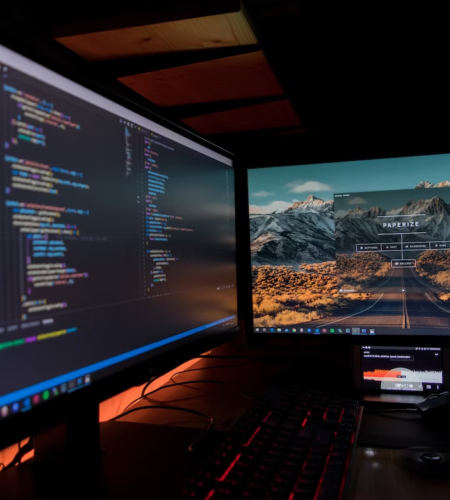After spending money on a coding bootcamp followed by several months of refining my coding skills, to say I was ‘reluctant’ to embrace No-code is an understatement. No longer do you need to spend years learning complex programming languages before you can write your first line of code. Instead, you can use no code or drag-and-drop platforms that allow anyone to build apps and websites with just a few clicks – we call this “low-code development.” Now, I know what you’re thinking: Why not just learn how to code? Well, there are several reasons why beginners should consider embracing the no-code revolution instead of spending thousands on expensive degrees and certifications that may not even guarantee them jobs when they graduate.
The No-Code Revolution
No-code is a new way to develop software, but it’s not just for beginners. It’s not just for web development, and it’s not just for non-developers. No-code can be used to create mobile apps as well as back-end applications in any language.
The idea behind no-code is simple: you don’t need to know how to write code in order to build something useful or interesting with technology–you only need an idea!
What is No Code?
No Code is a new way to learn programming. It’s a way to start coding without learning how to code. No Code is also known as “drag and drop”, because you simply drag blocks of code together and connect them with lines, like building with Lego bricks–or Lego blocks, if you prefer that metaphor.
No Code has been around for several years now, but only recently have we seen it gain popularity among people who want more from their smartphones than just checking email or playing games on them (though these are still valid uses!). The idea behind No Code is simple: if you can build an app in minutes rather than months or years–and make money doing so–you’ll find yourself asking why anyone would want anything else!
How is No Code Different from Other Programming Languages?
No code is a visual programming language, which means you can create apps by dragging and dropping visual elements. This makes it easy for anyone to use.
No code has been around since 2014, but it has recently gained popularity thanks to its ease of use and the fact that it does not require any prior knowledge of programming languages. However, this does not mean that no code is a beginner’s tool–it’s actually very powerful! You can build complex apps without writing any code at all; just drag and drop your way through creating an amazing product (or two).
Why Do We Need No Code?
You need no code to start coding today.
You have the opportunity to learn how to code with no programming language, no syntax and no manual labor. No code is ideal for beginners because it allows you to focus on your goal instead of getting caught up in technical details. It’s also a great way to get started in tech because it gives you an understanding of what developers do every day–but without any frustration or intimidation from having to learn all those languages at once!
Learn why no code is the best way to start coding today.
If you’re looking for a way to start coding that doesn’t require years of experience, then no code is the best way to get started.
No-code platforms allow anyone with basic computer skills and an Internet connection to build their own apps without needing any previous knowledge of programming languages or HTML. Here’s the list of no-code languages and platforms with their respective website links:
- Webflow: A visual web design platform to create responsive websites visually without writing code. Webflow
- Bubble: A no-code platform for building web applications using a visual interface and workflows. Bubble
- Zapier: A tool that lets you automate tasks between web applications without writing any code. Zapier
- Airtable: A collaborative no-code platform for creating and managing databases, spreadsheets, and other data-driven applications. Airtable
- Glide: A platform to create mobile apps from Google Sheets without coding. Glide
- Adalo: A no-code platform to build mobile and web apps with a drag-and-drop interface. Adalo
- Integromat: Similar to Zapier, it allows you to connect apps and automate workflows without writing code. Integromat
- Thunkable: A no-code platform for building mobile apps for Android and iOS using a visual drag-and-drop interface. Thunkable
- Appgyver: A no-code platform for building web and mobile apps with a visual interface and pre-built components. Appgyver
- Nintex: A platform for automating business processes and workflows without coding. Nintex
- OutSystems: A low-code platform that enables building complex applications with minimal coding. OutSystems
- Microsoft Power Apps: A platform to build custom apps and automate workflows using a low-code/no-code approach. Microsoft Power Apps
- WordPress: Though not strictly a no-code platform, it provides an easy-to-use interface for building websites and blogs without much coding knowledge. WordPress
- AppSheet: A no-code platform to create mobile and web apps from Google Sheets, Excel, and other data sources. AppSheet
If you have always wanted to learn how to code but felt that it was too difficult, then this is the right time. No code is the best way to start coding today. You don’t need any prior knowledge or experience with computers; all you need is your imagination!


Hi, this is a comment.